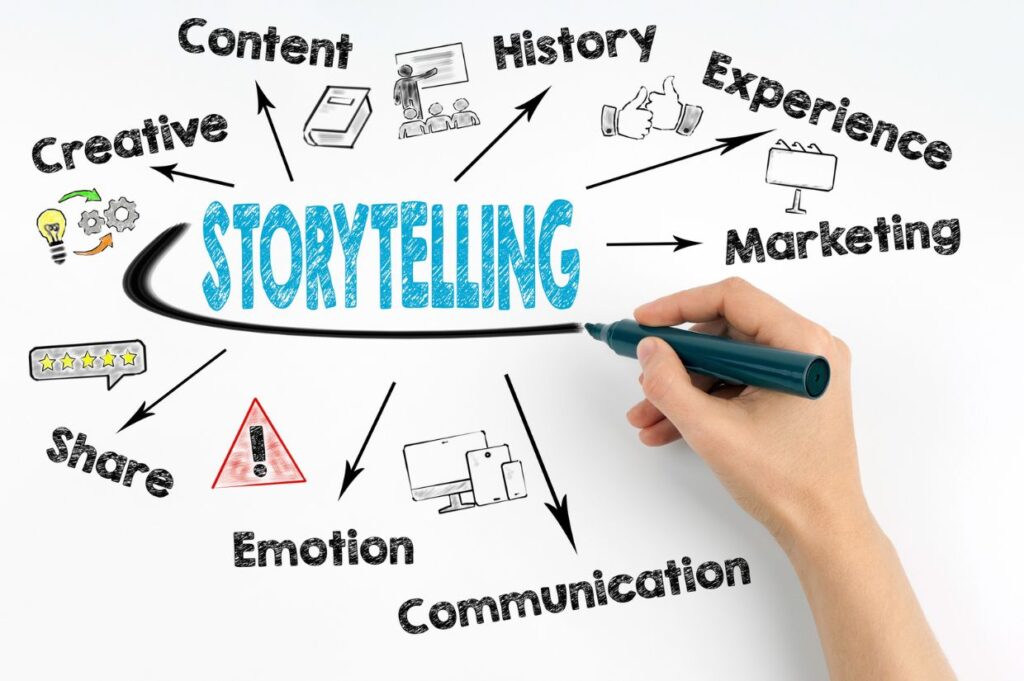When you think about the blogs that have truly captivated you, what stands out? Is it the neat layout, the fancy graphics or something else entirely? For many of us, it’s the stories. The posts that linger in our minds often have one thing in common: They tell a story. If it’s a heartfelt personal experience, a quirky anecdote or a compelling narrative, storytelling can transform a blog from a mere collection of words into a vibrant conversation with your readers.

Let’s learn more about the power of storytelling in blogging and how you can use it to connect with your audience on a deeper level.
In my own blogging journey, I’ve found that sharing personal stories makes a huge difference in how people connect with my content. For example, when I wrote about my childhood memories of cooking with my mom, I wasn’t just sharing a recipe; I was offering a piece of myself. That post got far more engagement because readers resonated with the story behind the food. It’s a reminder that no matter the niche, bringing in your experiences allows readers to feel like they know you personally, which keeps them coming back.
Why storytelling matters in blogging
Storytelling isn’t just a way to jazz up your blog posts; it’s a fundamental way to engage readers and build a genuine connection. Here’s why it’s so effective.

Emotional engagement
Stories tap into our emotions. They make us laugh, cry and feel inspired. When readers connect emotionally, they’re more likely to remember your content and return for more.
Relatability
Personal stories and anecdotes make your content relatable. They show readers that you’re not just a faceless blogger but a real person with experiences and insights that resonate with them.
Memorability
People remember stories better than they remember facts or figures. A well-told story can make your message stick and leave a lasting impression.
Trust building
Sharing personal stories and vulnerabilities can build trust with your audience. It shows authenticity and can make you more approachable.
Weaving personal stories into your blog posts
Incorporating personal stories into your blog posts doesn’t mean you should bare your soul whenever you write. It’s about finding the right balance and ensuring your stories add value. Here’s how you can effectively weave personal stories into your content.
Identify the key message
Before you start writing, think about the core message you want to convey. How can your personal story support or illustrate this message? For example, if you’re writing about overcoming challenges in freelance work, sharing a personal struggle and how you overcame it can make your advice more impactful.
Start with a hook
A great story grabs attention right from the start. Begin with a compelling hook — a surprising twist, an intriguing question or a vivid description — to draw readers in. For instance, instead of diving straight into tips for handling difficult clients, you might start with a story about a particularly challenging project and what it taught you.
Be authentic and honest
Authenticity is the key to compelling storytelling. Share genuine experiences and feelings. Readers can sense when a story is contrived or insincere. If you’re discussing a failure or a setback, don’t shy away from it. Sharing how you felt and what you learned can be incredibly powerful.
Use vivid descriptions
Paint a picture with your words. Use sensory details to make your story come alive. Describe the setting, the emotions and the actions. For instance, instead of just saying you were nervous about a presentation, describe the sweaty palms, the racing heart and the shaky voice.
Include dialogues and quotes
Dialogues and quotes can add authenticity and a personal touch to your stories. If you’re recounting a conversation with a mentor or a friend, include direct quotes to bring the story to life. This not only adds depth but also makes the story more engaging.
Make it relevant
Ensure your story ties back to the main topic of your blog post. It should enhance or illustrate the point you’re making. A story about your first blog post mishap can be a great way to discuss the importance of proofreading and editing.
Crafting engaging anecdotes and narratives
Anecdotes and narratives are powerful tools in blogging. Here’s how to craft them effectively.

Choose relevant anecdotes
Select anecdotes that are relevant to your topic and resonate with your audience. If you’re writing about time management, share a brief story of when poor planning led to chaos and what you learned from it.
Structure your narrative
Good narratives have a clear structure: A beginning, middle and end. Start with the setup, build up to the climax and then resolve the story. This structure helps keep readers engaged and makes your story more compelling.
Use humor when appropriate
Humor can be a great way to connect with your audience but use it appropriately. If your blog’s tone is lighthearted, don’t hesitate to include funny anecdotes. However, be mindful of your audience and context to avoid missteps.
Show, don’t just tell
Rather than simply telling your readers about an experience, show it through your storytelling. For example, instead of saying you had a stressful day, describe the events and your reactions in detail. This approach helps readers visualize and connect with your story.
End with a takeaway
Conclude your story with a clear takeaway or lesson. This helps readers understand the relevance of your anecdote and how it ties into the broader message of your blog post. For example, if your story was about a failed project, end with tips on how to avoid similar pitfalls.
Final thoughts
Incorporating storytelling into your blog posts is more than just a writing technique; it’s a way to create meaningful connections with your readers. By sharing personal stories, anecdotes and narratives, you can engage your audience emotionally, make your content more memorable and build trust. Remember, storytelling is about authenticity, relatability and relevance. Next time you sit down to write a blog post, think about how you can weave in stories that resonate with your audience and bring your content to life.
